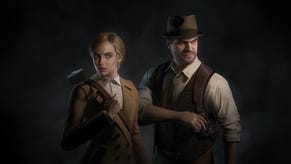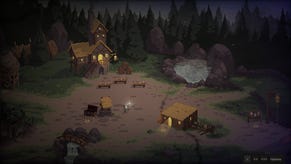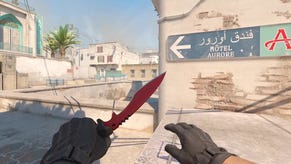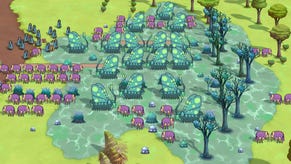The Making of: Shogun: Total War
[Another postmortem from the vaults. I've actually got a lot of these - about twenty. For a couple of years on PC Format, I did one a month for them. The idea was simply to chat to a developer about one of their previous games for a couple of pages, in kind of a more casual, laid back version of the sort of thing Gamasutra do so well. I'll be sticking them up here, one every Friday, until I run out. With the announcement of Empire: Total War, I thought it a good idea to start with Mike Simpson of Creative Assembly looking back at Shogun. This was a fun one - Simpson was completely self deprecating at all times, even in the face of the most ludicrous flattery.]
Shogun was an epic game that changed everything, rejuvenating the real-time strategy game at a time when it seemed that it was just going to be a tank rushing eternally down a game-design cul-de-sac. With its unique, atmospheric setting and its groundbreaking marriage of mass-scale battle scenes and high-level Risk-style strategic management, you presume that it was always destined for greatness. After all, this sort of thing couldn’t just happen without a plan. And you’d be wrong.
“It actually started when I joined the company,” reveals Creative Assembly’s Creative Director Mike Simpson, “Then there were five people, doing a sports game. A rugby game. We were looking at setting up a second team, and wanted to find something which was relatively safe and not very challenging, unsurprisingly. At that point, Command and Conquer clones had come out. Things like Kill Krush and Destroy. We looked at them and thought “These are easy to do!”. It’s fairly formulaic and you can’t really go wrong. And they’re selling bucketloads.”
So, obviously, they looked at them and thought that since they were so rubbish it was time for real greatness to… ah, no. “So we started off thinking we’d do a B-title RTS game,” says Mike, self-effacingly, “We didn’t really have a setting in mind, so Japan was a bit of a unique feature to go down a historical line. We did a few strategy things of getting people to move around, which looked quite cool, but was absolutely straight RTS stuff.”
However, then something changed. “At some point someone noted that the first 3Dfx cards had been announced and we thought we could do it in 3D,” Mike says, “so we sat down, had a look at that and decided that… No, there’s no-way that would ever work.” At this point, we’re half expecting Mike to reveal that aliens descended from the heavens and gave them a copy of the finished Total War, and they had nothing to do with it. However, at this point, their fortunes shifted: "We got a spline based landscape and to our great surprise it turned out to be feasible,” Mike grins, “At that point, everything changed. We moved the camera down to the general’s viewpoint. You can’t see things which are beyond hills or behind trees. That changed the nature of the game completely, moving it closer to the historical ideas.”
Necessity begat more invention. “The problem being that the battles themselves were very short, and we needed something to tie it together and make people care about the battles,” Mike continues, “And that’s where the strategy map came in. The idea was to give you a bigger picture and a context for the battles. So we ended up with the two sides – the strategy and the battles. And that worked, and it built from there.”
Phew. They finally had the skeleton of what became Total War. “We were aiming to do a B-title and knock it out, and it just took on a life of its own,” says Mike, noting the size of it, “After a while we realised it was better than that, and revised the whole thing. That iteration, where you look at what you got, look at the potential and realise that if you spent that much more time it’ll end up much better is important in making a good game.”
And while the moment was definitely right for Shogun, Mike’s very aware that it’s hardly without precursors. “It’s easy to say that we ended up with something completely original, but in many ways it wasn’t,” Mike explains, “It’s almost impossible to do something that’s completely original. There’s aspects from other games, which I’ve been involved in the past, which turned up. I worked on the series of Battle games like Waterloo and Austerlitz, and they were the first 3D battle games. They actually had that general’s viewpoint. It took five or six seconds to update the screen, so it was fairly slow, but they did stick you on the battlefield.”
“I’d also been involved around the edges of Lords of the Rising Sun, the Cinemaware game,” continues Mike, “that had the Japanese setting and kind of had the strategy and battle bits, though the battles there weren’t real battles. There’s plenty of concepts from other places. It goes all the way back to The Ancient Art Of War – that had strategy and battles together.” A history of historical wargames, essentially, a line which Shogun continued.
Clearly, not everything went perfectly. “The Throne Room”, says Mike, wincing, when asked about what went wrong. “It’s a very simple idea – we have scene, viewed from the throne. Someone walks in, you have a chat with them, they go out again. But making it work took years of people’s lives. It’s making a video out of component elements. A large team worked on it, and most of them were relatively inexperienced then. And cloth. We wanted everyone to have nice flowing material, but the technology of the day really wasn’t up to it. Oscillating bits of cloth, leading to the infamous trouser snake problem.” Not that it hasn’t got a legacy. “A design idea that gets thrown out and then dismissed as “Oh no – that’s another throne room,” Mike reveals.
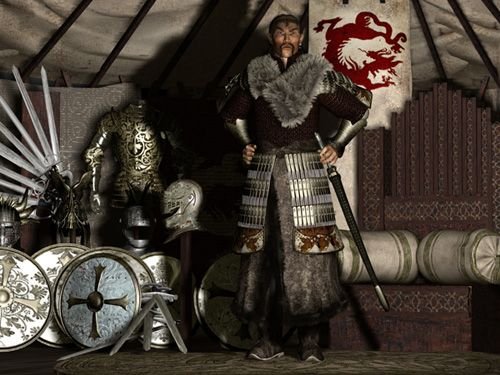
In terms of setting, the Japanese civil war period was an unusual one, which immediately distinguished Shogun from its peers. “We were looking for a period to set it in, and we were looking for something that would be seen to be cool,” answers Mike when asked how they ended up setting the game in the land of the rising sun, “And certainly in games, the Japan is seen as cool. But we were also looking for a period where there’s rapid technological change, so we could have a decent tech-tree, so the introduction of Gunpowder allowed that. And the third thing we needed was a lot of different factions, any of which could have ended up winning, but only one of which did. Which lead us to the Japanese Civil War period.”
While it’s elements like the graphical display of the soldiers which disappoints Mike, in terms of achievements its this dealing of the period history he’s especially pleased with. “The way we managed to get the history part right was always going to be very difficult,” he elaborates, “A lot of it hasn’t even been written about – at least written about in English. We ended up doing a lot of research to get the details right. The fact that one of the Japanese reviews said “Why does it take a group of foreigners to depict our history so well?”. I was very proud of that.”



